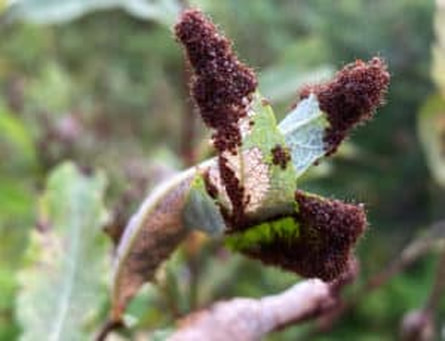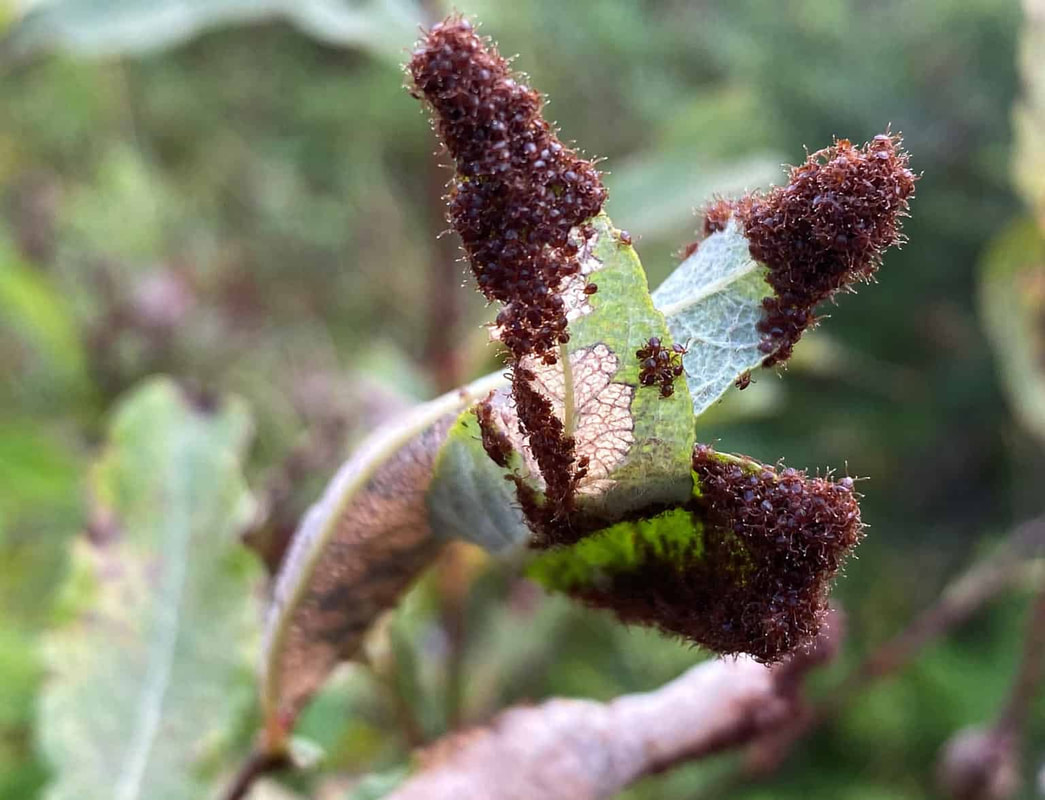|
By KELLY BOSTIAN
For the CCOF They are tiny little arthropods, but ticks win big in the creepy-crawly category. One of a creepy-crawly series of Facebook posts by the U.S. Fish and Wildlife this Halloween season shows a photograph of winter ticks by Vermont entomologist Cheryl Frank Sullivan. At first glance, Okies might think it’s a stalk of sorghum. But a quick closer look shows thousands of tiny winter ticks (sometimes called moose ticks).It’s a species most plentiful in northern moose country—but one that also occurs in Oklahoma. Run-ins with this arthropod variety are “very rare and sporadic,” but they do infest white-tailed deer and horses and can be a serious or even fatal issue for prized cattle, according to Justin Talley, professor of entomology and plant pathology at Oklahoma State University. “We have had some outbreaks but it’s not something we see every year,” he said. “The last time was with some rodeo roughstock horses that were out to pasture.” Sick livestock and “ghost moose” Sullivan, a professor and researcher at the University of Vermont, captured the tick-bearing plant pic on a typical work day. “I came across them during tick surveys,” she wrote via email. “This is a normal behavior for this species (larval questing in clusters) to various degrees.” A ball of tiny ticks will just hang out on vegetation until a host comes along, Sullivan said. Sometimes they might hang out until they die from exposure to inclement weather. They can also so infest a moose that it rubs to the point of killing the follicles, causing the hair to turn white. The condition gave rise to the common name “ghost moose.” Winter ticks are in the same genera as dog ticks and can be vectors for similar diseases, Talley said. Humans are not typically on the winter tick menu, however. A severe outbreak can cause anemia and loss of appetite for horses. Swelling under the abdomen called “water belly,” also might be a result. For a prized breeding cow an infestation that brings Anaplasmosis, a parasitic infection, can be fatal, he said. “They tend to target established animals, so if it’s a cow in a breeding program with a lot of investment behind it that’s a serious concern for a cattle operation,” Talley said. But again, he emphasized, they are relatively sparse in Oklahoma. Don’t forget about ‘the other ticks’ Four years of monthly sampling for seasonal tick prevalence research recently completed by OSU researchers led by entomologist Bruce Noden didn’t turn up a single winter tick, Talley said. Oklahomans who spend time outdoors in the winter months might want to take note of another species, however. Oklahoma’s dog ticks, tied to Rocky Mountain spotted fever, and lone star ticks, tied to southern tick-associated rash illness, or STARI, as well as ehrlichiosis, and alpha-gal allergy, peak in April and fade out through September. But adult black-legged ticks ramp up in September and October and become most active in November and December, Talley said. Their prevalence lines up perfectly with deer hunting seasons. The ticks can spread a potentially life-threatening parasitic infection called babesiosis, according to OSU fact sheets. Black-legged ticks can transmit Lyme disease. The larval ticks in Oklahoma most often feed on reptiles rather than field mice that host the disease, however, so cases have been relatively rare compared to other states. State health officials advise that Oklahomans practice caution regarding ticks year-round. Kelly Bostian is an independent journalist writing for The Conservation Coalition of Oklahoma Foundation, a 501c3 non-profit dedicated to education and outreach on conservation issues facing Oklahomans. To learn more about what we do and to support Kelly’s work, see the About the CCOF page
0 Comments
Leave a Reply. |
Archives
May 2024
Categories
All
|
Conservation Coalition of Oklahoma
P.O. Box 2751
Oklahoma City, OK 73101
[email protected]



